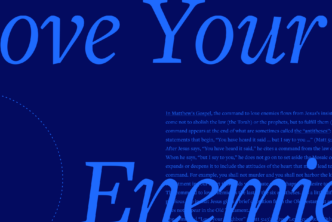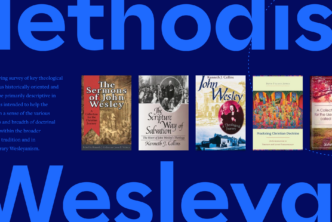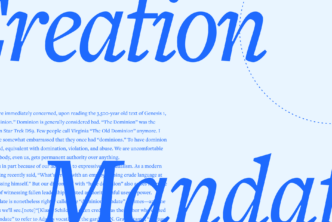By Kay Arthur
Before I share with you how I study God’s word using the inductive Bible study method, I want to share with you why I study it this way.
As Moses said in Deuteronomy 32:47, it is my life! Jesus, quoting from Deuteronomy 8:3, said we are to live on every word that comes from the mouth of God. Like manna, it is our daily sustenance. There are 66 books in the Bible, and I believe God wants us to know all 66. In Peter’s final letter, he told us it is everything we need for life and godliness (2 Pet 1:3). The word of God is my plumb line by which I measure everything I hear and read. His word is truth!
You say, “But I don’t have the intelligence or education to understand it.” If you are a Christian, you are indwelt by the Spirit of God. He is your teacher and your helper. If I can do it, you can. I often tell people any ol’ bush will do to set on fire with the fire of God.
The inductive Bible study approach
Now let me tell you how I study, and how Precept Ministries is teaching people from about 185 countries in close to 83 languages to do the same—people from all walks of life and persuasions.
I begin with prayer, asking God to speak to me, to direct me to the book he wants me to study and to help me understand it. (Every study I have ever done has been by our Father’s direction.) Every book of the Bible has its own unique purpose.
And then I start reading that book. I need to discover what kind of literature it is so I can approach it accordingly. For shorter books of the Bible, I read through the whole book. For longer ones, I read enough to determine whether it’s narrative, prophecy, letter, poetry, or another genre of literature. I also want to see if the author states his purpose in writing.
And that’s the start of the Precept Bible Study Method, an inductive approach to Bible study. I start with the text, and I let the text tell me about itself. I’ll easily discern if it’s a letter because the form and the identification of the writer and the recipient are apparent. And in that case, my next step is to read it all the way through as if I just received that letter in the mailbox, written to me. If it’s prophecy, the opening will usually reveal that. Again, reading the text will help me see what key ideas the prophet is bringing to his audience—and to me. And so on for other kinds of literature.
Read Scripture critically
As I read, I pay attention to repetition. Repeated words and phrases are keys to understanding the messages in letters and prophets, so I color-code them or mark them in distinctive ways, so they jump off the page. Their repetition shows the author’s emphasis—what he’s trying to communicate. These may repeat throughout the book or only in sections or chapters. And these lead to understanding the structure of a book. Letting the author reveal his purpose and message his way is paramount.
Of first importance is observing carefully what the text says, and for that I need to slow down and read with a purpose. My favorite way to do that is to interrogate the text, asking the “5 W’s and an H” questions: Who? What? When? Where? Why? How? The text has the answers to questions formed from these words, and they’ll shout their answers out to you if you’ll let them. Mark those key words and phrases. Then let those markings guide your eyes from place to place as visual cues, making a list of what you learn at each occurrence.
Characters come to life in their adventures, prophetic messages become clear, and the word reveals its deep insights into God, his character, his ways, and his dealings with people.
I’m always looking for the lesson I’m to learn as God shapes and molds me to his will through his Word.
As I dig deeper into a multichapter book, I’ll follow this process chapter by chapter, but here we’ll see more detail since we’re looking at a smaller section of text. I’m able here to refine my observations and look at other facets of writing.
My focus may have started with main characters and events, or repeated words and phrases in messages, but we also need to look at time phrases that reveal sequence and historical flow, geographical locations that guide narrative progression, and contrasts and comparisons that show how the author brings out his points. And again, I dig into the key words and phrases in smaller segments—things that might not have been obvious in my initial study.
Always look for the ‘lesson’
Sometimes I need to investigate something unfamiliar—an English word that’s not part of my day-to-day vocabulary or one that makes me wonder if there’s a richer meaning in the original Hebrew or Greek. Curiosity gets me selectively, judiciously digging in, using word study tools in Logos Bible Software to learn more.
And because Scripture is the best commentary on Scripture, I cross-reference verses and passages that are parallel to or expound on the same ideas, trying to bring understanding. I want to know what this author has to say elsewhere, or what other authors say about the same event or idea.
While I start with tools to enhance my observation of the text (using markings, making lists to first discover what the text says), I then move to discover the meaning. This is where word studies and cross-references come into play. Scripture never contradicts itself.
Ultimately, I’m always looking for the lesson I’m to learn as God shapes and molds me to his will through his word. I’ve always said that inductive study is not complete until I make application to my life. And the Precept Bible Study Method follows this last rule. As I study, I’m asking how I can change.
After all this, I am ready to see what other students and teachers have learned. I consult commentaries to confirm or challenge what I’ve seen. No one’s interpretation is infallible, so it’s essential to discuss what you’ve studied with others who have studied the same thing.
Don’t interpret the Bible alone
While I observe Scripture alone, I don’t try to interpret it alone. I discover truth for myself, but not by myself. We have the most incredible men and women of the word here at Precept Ministries International. See what the Lord has shown others. Discuss it, and make sure you stay with the text.
I know I am called to go to all the nations and make disciples (followers) of the resurrected Lord Jesus Christ, teaching them to observe all Jesus has commanded us. That is why at age 85 I am still going. Ecclesiastes tells us there’s no retirement, no discharge, in the time of war (8:8).
Knowing and studying his Word prepares me for the front lines!
***
To learn how to study the Bible inductively, try the Kay Arthur Precept Chapter Study workflow, which will guide you through the steps of studying a chapter of the Bible using the inductive Bible study method.
You can download this workflow for free and use it with your Logos Basic and above.
This article originally appeared in the November 2019 issue of Ministry Team magazine. The title and subheads are the addition of an editor.
Kay Arthur is the cofounder (with her late husband, Jack) of Precept Ministries International. She is the teacher and host of Precepts for Life, a daily television, radio, and online program that takes the student through the Bible book by book and verse by verse using the inductive Bible study method.






